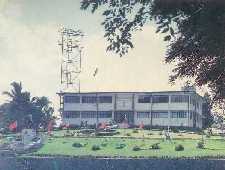|
|
|
|
|
PNPA HISTORY
One can easily recall that a few years back our policemen were hired almost purely on the basis of their personal relations with certain politicians. The police service then required no entry level standards, no training, no consistent promotional policies and no code of conduct. Members of our country’s city and municipal force were simply hired, sworn in, issued guns and equipment, assign a beat and told to police our communities. Of course, we achieve a substantial improvement with the passage on September 6, 1966 of Republic Act 4864, otherwise known as the Police Act of 1966. This law provided for the establishment of a Police Commission (later renamed National Police Commission) and of an integrated and uniform system of basic and specialized police training. But the set up was not without its concomitant pitfalls. Training was limited to police service personnel only. It did not include the fire and jail services. What is more the system itself lent to locally based, individualized and separate local police units that lead to the mark preponderance of political warlords’ private armies over the police forces and the use of policemen by unscrupulous politicians. It was mainly for these reasons that we opted to unite all city and municipal police, fire and jail services.
Immediately after the promulgation of PD 1184, then the Chief of Constabulary and concurrently Director General of the Integrated National Police, Major General Fidel V. Ramos created a study committee to prepare the corresponding feasibility study and all other prerequisites for the activation of the envisioned police academy. In February 1978, General Ramos recommended to Secretary Juan Ponce Enrile, then Secretary of National Defense, the activation of the Philippine National Police Academy. As a result of that recommendation DND order No. 3 was issued on May 25, 1978 organizing and activating the Philippine National Police Academy effective June 12, 1978 in line with the national objective to upgrade the law enforcement service in the country.
But the Academy started without a definite site of its own. It was formally inaugurated on June 30, 1978 on Fort Bonifacio where it had to share headquarters with the Integrated National Police Training Command. Defense Deputy Minister Carmelo Z. Barbero was the guest of honor and speaker during the inauguration. From then on, development followed one after the other in quick succession. Formal academic instructions started on July 17, 1978 until the Academy moved to Camp Vicente Lim, Calamba, Laguna on August 19, 1978. During its initial years, the Academy limited the admission for the two year Bachelor of Science in Public Safety to qualified members of INP the only.
One of the significant development that happened was on January 15, 1981 when the PNPA received its academic charter through the promulgation of Presidential Decree No. 1780, otherwise known as the Philippine National Police Academy Charter of 1981. It was this decree that elevated the academy to its status as the premier educational institution of the Integrated National Police, now the Philippine National Police.
On 13 April 1995, the Academy moved to Camp General Mariano N. Castaņeda in Silang, Cavite as its new and permanent home. Today, the Academy stands at the apex of professionalization as the primary institution for PNP, BJMP and BFP officers. |